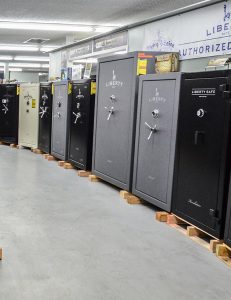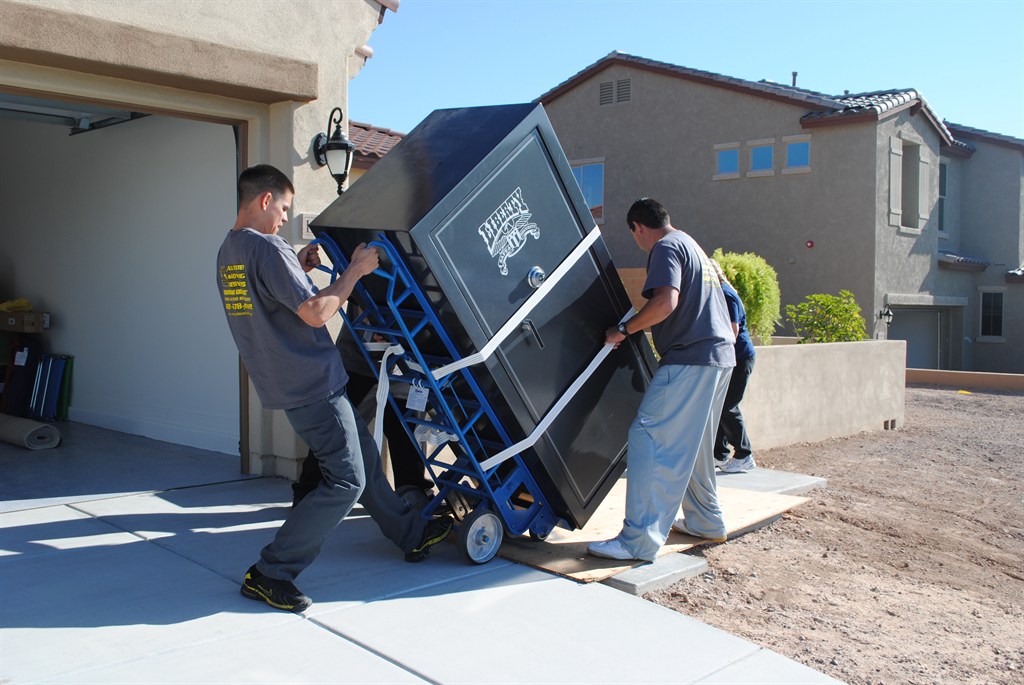
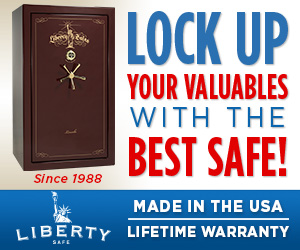
Editor’s Note: This is the eighth installment in a series about home gun safes. The series will dive into detail about safe technology, mounting/hardening you safe, increased fire protection, specialty safes and higher-rated safes, and buying used safes. There is a lot of information to consider when buying a safe. Follow along with us as we take a deep dive into this subject.
SERIES:
- Part 1: Introduction to Gun Safes
- Part 2: Electronic/Biometric/Manual Locks
- Part 3:Anchoring Your Safe
- Part 4: Fireproofing Your Gun Safe
- Part 5: Understanding The Threats
- Part 6:Specialty Safes & Remodels
- Part 7: Quick-Access Safes
- Part 8: Buying & Selling Used Safes
- Part 9: Moisture, the Constant Battle
Most of the safes that I own and have owned were purchased used. Several circumstances made this possible. I owned a truck and trailer to move the safes with. I had a wide circle of friends that owned safes and knew when I was looking to get one. I have never had a bad experience buying a used safe.
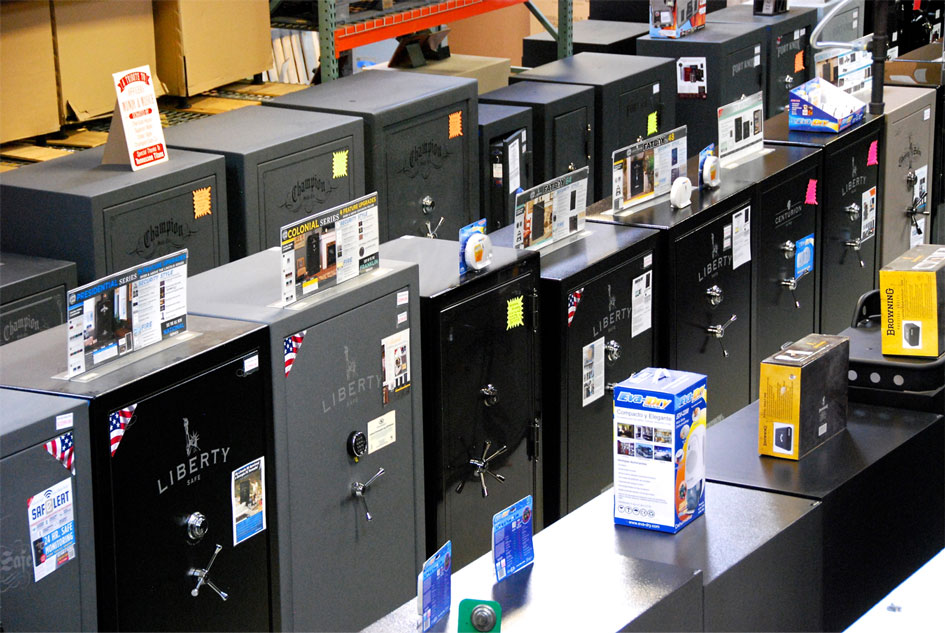
There are a lot of options out there when it comes to guns safes. Selling yours used can get you the money to upgrade to a bigger model, and buying a used one can save you some money.
I am asked about buying a safe about once per month. I will always respond with my thoughts, and then say something like “I will let you know if I hear about anyone selling a safe like the one you want.” More than half of the time, based on the looks I get and follow up questions, people believe that used gun safes are not good purchases, as if the only reason to sell a safe second hand is because it is sub-par.
Selling a used gun safe does not necessarily mean that something is wrong with it. There are many other reasons one might be sold. I can tell you from experience, as I have sold several perfectly good safes. The owner could be moving to a new home, upgrading to a larger safe, or just orchestrating a general “force realignment” due to domestic changes.
So, buying a used gun safe is not a bad idea. Also, selling your safe is a great way to upgrade to that new safe you really want with all those great features you just have to have. With that out of the way, you do need to be aware of some considerations before you decide to proceed.
Shopping vs Buying
If you want to buy a new safe, there are a number of choices that must be made in order to determine what you need before you are ready to purchase. Retail stores, online stores, and even manufacturers will usually get a new safe to you within a matter of days or weeks from the time of purchase. You just do your homework, click “Buy,” sit back, and relax.
The experience of going used is much more like hunting. First, you must decide what you want and need in a safe (see the other articles in this series). Once you know what you’re after, you can begin to stalk your prey. For me, step one is letting all my friends know what I am looking for.
You will (and should) spend a great deal of time filtering out safes that don’t fit your criteria, but don’t give up. Chances are, someone out there wanted the same specifics that you did, and one of them is selling. Many safes are sold by the family of the former owner, so estate sales can be great hunting grounds for you online.
Some of your desired features may be possible to add to an otherwise-working safe that lacks them. Lock interfaces can be changed from dial to keypad, and msot newer safes could even take biometric. Shelving, lights and other interior changes, for the most part, are no big deal. Cost is the only thing to factor into your decision when it comes to addable features like these.
Value Pricing
The value price proposition works generally on the 60/40 rule based on my research, based on the age and condition of the safe. Now, this is not a hard and fast rule, but rather a ballpark to get your mindset in the right place. A safe less than 10 years old and in excellent condition can go for 60% of its retail price. An undamaged safe over 10 years old and in operable condition will often sell for 40% of its retail price.
Every rule has its exceptions, and this rule is no different. To help you with some of the variables, here are a few quick exceptions to the 60/40 that I feel are important in the following chart:
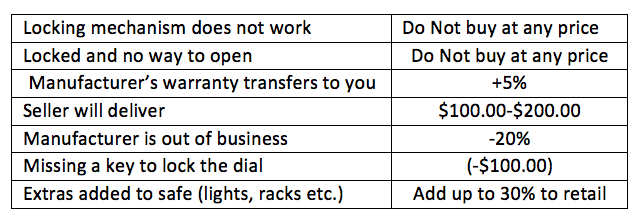 Delivery and Setup
Delivery and Setup
Delivery and setup are very real considerations. Do not fail to take these services into consideration, especially when hunting for a larger safe. If you have the means to handle this yourself (as I do), the actual execution of the move will go something like the following: You will call in favors on/bribe a few of your friends and hook up your trailer. Your squad will sweat and groan and throw out a back or two before eventually rigging up a solution to get it onto the trailer. This will probably involve some combination of: a piece of carpet, a dolly, a trip to someone’s house for a larger dolly, and cussing. Even with a good plan, loading the safe onto your trailer and then setting it up at your house will not be easy. I have paid as little as $100.00 to have a full-sized safe moved from one house to another. I have had friends drop $1,400 to have a large commercial safe moved. If you’re in doubt, don’t be too stingy to hire someone to have it done.
You need to decide for yourself whether you want the combination changed. I have never had this done, but I would advise calling around to locksmiths prior to buying, as once you own the safe, the price seems to go higher. Know whether you’re re-keying/changing the combination before you buy, so that you can factor that into your search.
Whether you decide to keep or change the combination, you want to ensure that the safe can be opened with its current mechanism. Have the seller write the combination on a card, and open the safe several times from the card before you hand over the money. Tape the card to the top of the safe and take a picture with your phone. This will save you money no matter what you end up doing with it later.
Safety
Whether you are the buyer or the seller, you need to consider safety and security. I have purchased safes from the type of friends that I don’t have to worry about entrusting with the knowledge that I own a safe. I don’t even have to worry about them knowing the combination. However, when I purchase from a stranger, I always pick up the safe (no deliveries), and never revealed where I was taking it. I always pay cash rather than with a check with my name and address emblazoned on it. These precautionary measures ensure my peace of mind. If I did not know the seller and did not have the means to transport it myself, I still would not have them deliver. I would opt for a mover, safe specialist or locksmith to handle this task.
If you are selling a safe, consider whether you have access to a neutral meeting place to show it, rather than bringing strangers to your home. I have had friends allow me to store a safe that I was selling at their place of business, in the back. I would think that renting a small storage space for a month could work as well.
The Bottom Line
Buying or selling a used safe can be a good choice, even if it’s not for everyone. Buying from a retailer that will handle everything can easily be worth the money. The logistics, shopping around, and precautionary measures may involve tasks that you can’t do, or simply don’t desire to do. If you do buy new, always ask whether they take trade-ins. If they do, the convenience could be well worth the money. So, if you want to sell your safe to trade up, or simply buy a used one, then definitely consider all these points before you make your decision.
